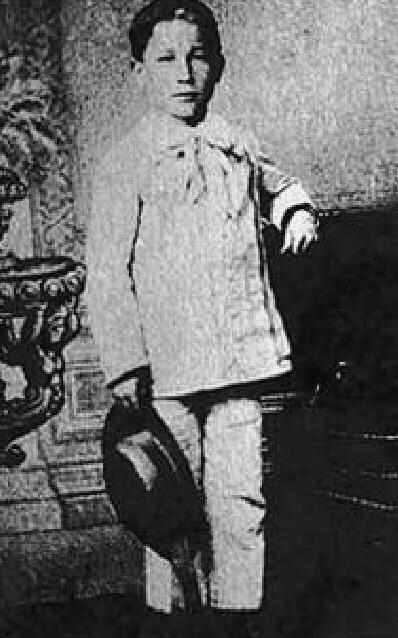
Figure 1.--Here is a photograph of Joseph Meister. I'm not sure when it was taken, presumably a while after he was treated by Psteur. Here we see him dressed up in his best suit.


Figure 1.--Here is a photograph of Joseph Meister. I'm not sure when it was taken, presumably a while after he was treated by Psteur. Here we see him dressed up in his best suit. |
Joseph Meister was a normal little 9-year old French boy. One day he went to played and passed into history. He was bitten by a rabid dog. By all accounts he should have died, had it not been for famed scientist Louis Pasteur (1822-95). Pasteir picked up on the work of Edward Jenner in England. Pasteur afer working with crystals began to work on bacterial. He disproved the idea of spontaneous generation. As a result of his work on bacteria, he inoculated a boy against rabies. Pasteur went on to develop a process to make Milk safer to drink, today known as Pasteurization.
Joseph Meister was born in 1877. He was a normal little 9-year old French boy. Joseph on July 4, 1886 he went to played and passed into history. He was
attacked by a rabid dog, knocked down and severely bitten. Joseph was badly bitten and found great difficulty in walking. Pasteur wrote, "Joseph Meister had been lifted up from beneath him covered with slaver and blood." [Pasteur] By all accounts he should have died, had it not been for famed scientist Louis Pasteur. His mother, having read in the newspapers about Pasteur's work in treating sheep suffering from anthrax decided to visit him. She brought Joseph and the grocer who owned the dog accompanied them. He was also attacked, but the dog's fangs did not pierce his skin. The meeting between Mrs Meister and Pasteur took place at his laboritory on July 6. She appealed to Pasteur to treat her son. The local doctor has cauterized the wounds with carbolic acid.
picked up on the work of Edward Jenner in England. Pasteur afer working with crystals began to work on bacterial. He disproved the idea of spontaneous generation. As a result of his work on bacteria, he inoculated a boy against rabies. Pasteur went on to develop a process to make Milk safer to drink, today known as Pasteurization.
Pasteur knew to attempt a treatment for Joseph was a risky venture. He was indeed working on rabies. He had experimented on about 40 dogs, but the serum was still highly experimental and not yet ready to be used on humans. Pasteur knew the dogs recovered from rabies but that did not mean a human would. He was in a dilema. His heart went out to the stricken boy and his mother. He also knew that Joseph who would surely die in a most horrible way. If he treated the boy and he died then Pasteur would loose the credibility he had worked hard to gain and more importantly set his work back years. Pasteur spoke with medical praticianers and colleagues. He wrote in his diary, "The opinion of our wise colleague and of Dr. Grancher was that by the intensity and the number of bites, Joseph Meister was almost inevitably to come down with rabies." [Pasteur] After much soul searching, he decided to treat the boy.
Pasteur used material from the spinal cord of a rabbit that had died of rabies. Joseph responded to the treatment and fully recovered. The results with Joseph reassured Pastuer that his research was valid despite his lack of understanding of many aspects of the disease. He now knew that his vaccine worked with people as well as dogs. Pasteur made this vaccine available much quicker than he otherwise had planned for people who had rabies. It was a small boy who led the way forwards.
There is another part to the story. After Meister was saved. Three American little boys were bitten by a rabid animal. They either went to France to be treated by Pasteur or an American doctor followed Pasteur's method. The boys were saved. I assume they wre treated by an American doctor as it would have taken a while to get them to France as it would have required an Atlantic steamship crossing. I do not yet, however, know the details yet.
Joseph went on to lead a full life and experiences. He had no lingering affects from the illness. Joseph Meister never forgot Pasteur and had great respect for him. He fought in the French Army during World War I. He eventually obtained a job with the Pasteur Institute. He was the gate keeper and in 1940 after the NAZI occupation commited suiside. Like many of his countrymen he was devestated by the fall of France. We do not fully understand why he took his life. He may have though that Alsace would now become permanently German. The Germans put a decoration on Pasteur's tomb and this appears to have disturbed him. [Pasteur Institute] When Meister was unable to prevent the NAZIs from entering Pasteur's crypt, he went home, took out his World war I service revolver and shot himself. He was 63 years old.
Cohn, David V. "The Life and Times of Louis Pasteur", Lecture at the School of Dentistry, University of Louisville, February 11, 1996.
Liber, Elisabeth. Documentaliste du Musťe Pasteur, eMail message, April 14, 2004.
Pasteur, Louis. Diary of the Treatment of Joseph Meister.
Navigate the Boys' Historical Clothing Web Site:
[Return to the Main 19th century children in history page]
[Return to the Main English orphanage page]
[Introduction]
[Activities]
[Biographies]
[Chronology]
[Clothing styles]
[Countries]
[Topics]
[Bibliographies]
[Contributions]
[FAQs]
[Glossaries]
[Satellite sites]
[Tools]
[Boys' Clothing Home]
